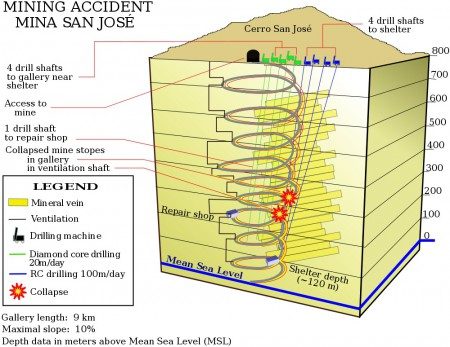Like many of you, I am sure, I have been mesmerized by the stories emerging from “Camp Hope” in the mountains of Chile over the past few weeks. The entire world, it seems, has followed these dramatic events. You may have followed, too.
On August 5, thirty-three miners were trapped by an underground disaster in the San José mine, outside the village of Copiapó – buried in the rock half-a-mile beneath the Atacama Desert. A full-press rescue operation immediately ensued.

The entire Chilean nation became involved in the effort, while the world itself cheered them on. Boring equipment was provided by companies in Canada, South Africa, and the United States. A winch and cable came from a company in Austria. Rescue “pods” were engineered by NASA and the Chilean Navy, following a German design. Within days, exploratory pilot holes were bored into the rock. A larger hole soon followed – large enough eventually to accommodate a man. And on October 12-13, one-by-one, the men were successfully extracted. Thirty-three of them. We were mesmerized.
I have been mesmerized, as well, by another, larger, more complicated rescue operation underway simultaneously in Cape Town, South Africa. You may have been following that impressive effort, too.
Cape Town was host to the third in a series of global consultations sponsored by the Lausanne Committee on World Evangelization. More than 4000 leaders from 198 countries gathered for nine days in October. The gathering focused on the world’s lost: hidden in our great cities, scattered abroad in “Christian” lands, spread around the world – poor, subject to warring and violence, in difficult-to-access communities. Participants strategized and prayed for their rescue – the hopeful, wide-ranging, colossally significant rescue of approximately 2 billion men and women who have yet to meet the Savior of the world.
This morning I visited the New York Times online, mesmerized, as I say, by both enormous rescue operations. I searched for references to “Cape Town” and “Lausanne” – and was disappointed to find a total of one article making reference to the historic gathering. I searched as well for “Camp Hope;” fifty-seven articles have appeared in the Times over the last 30 days. I visited BBC and CNN online, too, and found similar ratios.
There is nothing wrong with this scenario, of course, or even very surprising. Some rescue operations, let’s be honest, are easier to “get into” than others. But imagine if we had our proportions right. Imagine if we invested, in a proportional sort of way, similar time and the same kind of energy in the rescue operation underway in Cape Town as we have given recently in Copiapó.
At the height of the operation in Copiapó, more than 2000 journalists gathered to observe the rescue of 33 miners; how many should cheer an effort to rescue 2 billion?
It is estimated that 10-20 million dollars were expended in the rescue of 33 miners; what might we give for the rescue of 2 billion?
And I wonder how many have prayed for the rescue of 33 miners? I did myself; I wonder how many more? Some thousands, maybe? How many should pray for the rescue of 2 billion, if we had our proportions right? But we do not.
In this morning’s newspaper there was another feature article regarding the rescued miners in Copiapó (October 25, 2010). In one of the most poignant interviews I have yet seen, one of the miners said simply, “Thanks for believing that we were alive.” Against all odds, the rescuers at the top of the mine believed that the miners trapped below were alive.
This is the reason our proportions go out of whack. The world’s lost are not quite “alive” for many of us. They are out of sight. We do not hear their cries. We hardly believe they are there.
Let me tell you, the world’s lost are quite “alive” for God. God bends every effort to reach them. God will expend his everything in order to rescue a single soul; and he gives all for the sake of the billions, too. He has his proportions right. He wants to make ours right, too.